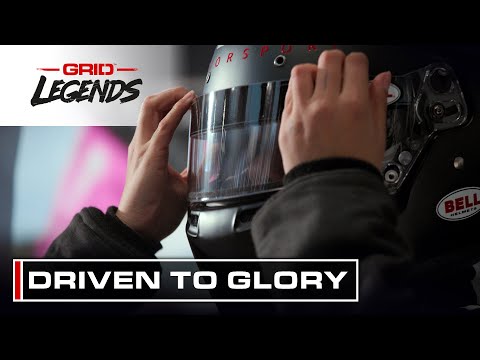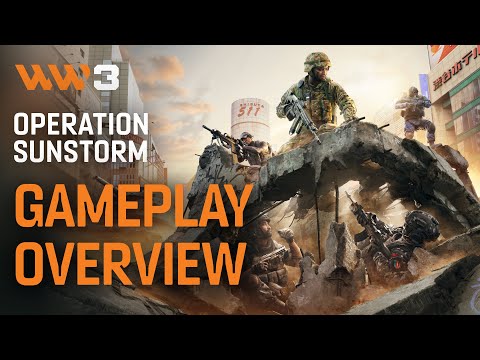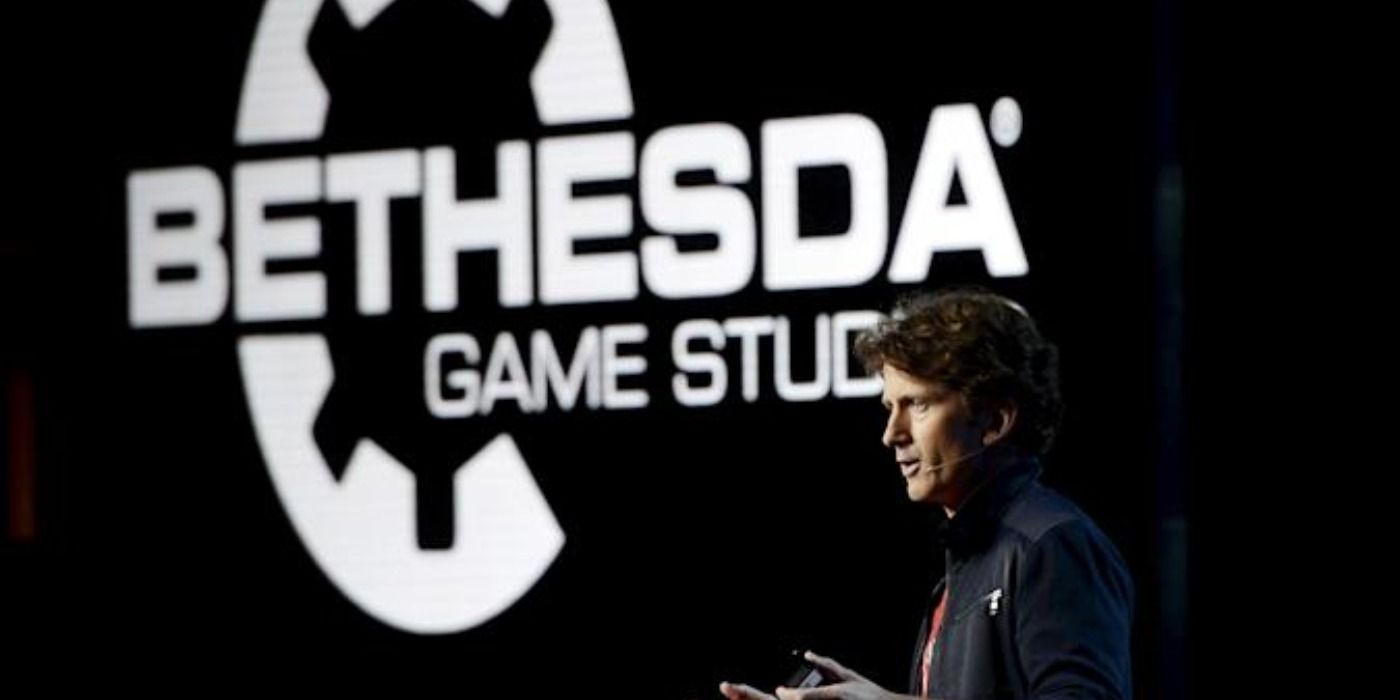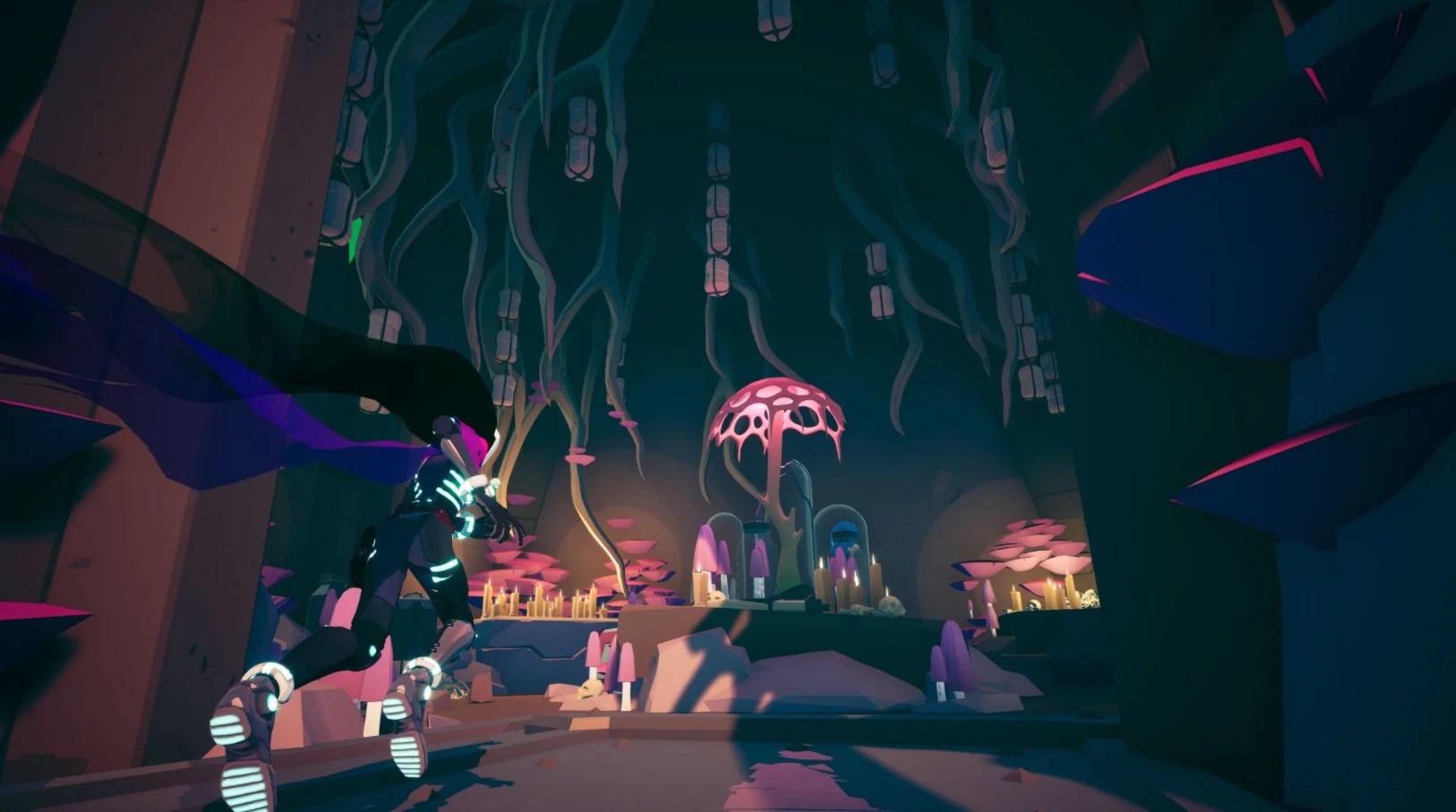
Solar Ash is the next title from indie developer Heart Machine (Hyper Light Drifter). In this interview, I got to sit down with the lead developer and founder of the studio, Alx Preston. Down below we cover several topics ranging from speedrunning to accessibility settings and Kickstarter to partnering with Sony and Epic.
Solar Ash is nearly here, but it has been a long five-year road for the Preston on the team at Heart Machine. And we would like to thank him for taking the time to sit down with us even as the game is on the home stretch to its approaching launch date.
This was a fantastic experience to be able to talk to Preston about Solar Ash, a little bit about his past work on Hyper Light Drifter, and all of the hard work that has gone into the new game. You can find the full conversation down below.
Note: This interview has been lightly edited for clarity.
Omar: What was it like or what were some of the challenges you and the team had adapting kind of a similar art style or the same kind of general feeling from Hyper Light Drifter to Solar Ash, going from 2D to 3D?
Alx: The styles share a lot of similarities and certainly we had to make a lot of accommodations for 3D and kind of adjust what we were doing and our expectations overall of what can be done. But it also opened up a lot of new pathways that weren’t possible in 2D that made it really interesting and enjoyable in ways and more unique than we could do in 2D. You know 3D just by virtue of having another dimension opens up manyfold different options. And Unreal is relatively powerful.
We’ve had a lot of really talented people on the team on the graphics and engineering end of things, tech-art and environment art, et cetera. You know, a lot of very talented folks working on it to get the look that we got out of it. It’s certainly challenging to have a non-PBR workflow. All of the industry is really biased towards PBR and the tools that are created and the pipelines that are there and the way that everything intercepts and what the engines are built around, so you have to do a lot of heavy lifting to go against the grain for that and get this kind of stylized more cell-shaded cartoonish or hyper colorful flat look.
It’s not the same as something that’s flat-shaded. You see the smaller indie games that are flat-shaded. And that means that it’s like turning elements off from the rendering pipeline typically to get the lower stylized look. I love that look but it’s used because it’s a little simpler and easier to deal with in general for smaller teams that don’t have the luxury of the tech artist or graphics engineer because those things are difficult jobs for very talented people and this is quite a step beyond flat-shading.
Overall it’s been a blast to see what we can do with the format, with the pipeline. It’s been a big damn challenge, but we’ve had some heavy hitters on the team that have been able to knock it out of the park.
Omar: What about the cell-shaded art style made it attractive to you? And what made you want to stick with a sort of similar look to Hyper Light Drifter versus going for something completely out of left field?
Alx: This is still generally speaking the style I used in my personal work. Obviously, there’s been a lot of efforts that have gone into it from a variety of folks on the team to really influence and push this game into its own, visually speaking. But it stems from the original concepts that I’ve done and again stylistic choices that I make as an artist and that others have made to follow through on that vision.
And that comes a lot from cartoons, anime, and growing up with those things close to my heart. We’re all a bunch of nerds at the end of the day just trying to make cool stuff, so I think we all kind of share in a certain joy for animation and what’s achieved there and emulate some version of that in 3D in real-time.
Omar: After you wrapped up production on Hyper Light Drifter, how long did it take to get started on the development of Solar Ash Kingdom — now Solar Ash? Where did that title idea come from and why did you decide to drop Kingdom off at the end of the name?
Alx: The game changed over time. It’s been five years in development now. The core parts of the story remain the same, what the characters are going through. But aspects of it shifted around enough with the setting and otherwise that it didn’t make much sense anymore and it felt like a more succinct way of speaking about the game.
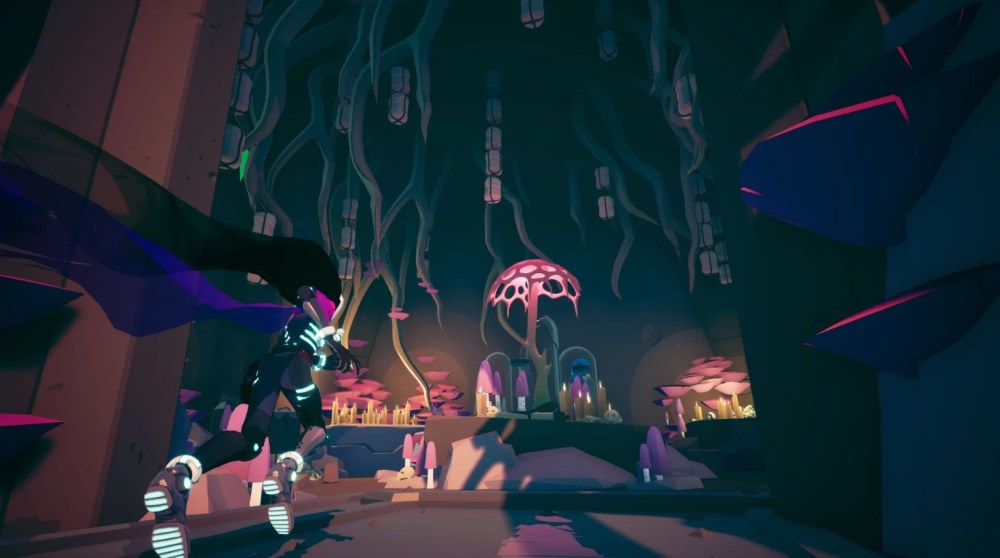
Omar: Returning to Hyper Light Drifter, I think it’s fair to say that it’s a good example of a Kickstarter success story. But now with Solar Ash not being reliant on that stream of income, how has that difference in the development process impacted Solar Ash?
Alx: There are plenty of similarities. You’re still beholden to some other entity and you know the entity in this case being our publisher versus Kickstarter participants from the original title. So it’s been a good change in a lot of ways but it’s just different now. It’s not really better or worse. The fortunate thing about it is with the publisher if we need to extend deadlines or we need to extend our budget for X, Y, Z reasons, we’ve done that.
And they can help shoulder the burden on shipping and a lot of other elements that we didn’t have support for on Drifter. We did it all ourselves. That was great in a lot of ways to learn those lessons and work through that process and understand how every step of the process works. But it’s also a shit ton of work.
Again, being able to distribute some of that, especially with a title that’s a whole lot bigger, is part of why I wanted to go this route in the first place. I knew this was going to be an expensive game far more than Drifter ever was. I knew it was going to be a lot bigger and that having that type of support was a wise move to distribute the load and not destroy ourselves internally on all the different aspects that can require attention when shipping out a title and especially one of this magnitude.
Basically, it boils down to this is a big fucking game, so it needed a lot of help and work that Drifter was just more contained.
Omar: You definitely have a reputation for creating games that aren’t easy.
Alx: Sure.
Omar: And based upon everything we’ve seen with Solar Ash it seems like it’s going to keep this similar level of difficulty. How does the difficulty in Solar Ash compare to Hyper Light Drifter and what accessibility settings might we expect to see in the new game?
Alx: Well, it’s hard to compare the difficulty between the titles just because they’re such different games. Drifter really focused on the moment-to-moment combat in scenarios with some exploration and light platforming. It was a fixed view, et cetera. It had its methods and you could really pinpoint the ways that it was difficult. Whereas Solar is a lot more fluid, it’s focused on traversal, platforming elements, it’s a 3D game, and it’s third-person meaning you need to control the camera and look at a lot of things around the world. We ask a lot of you there, whereas Drifter mechanically on the gamepad was much more grounded and straightforward literally and figuratively.
This game requires a bit more on the mechanical side of things to navigate just by virtue of the camera and then you toss in the speed, you toss in the big giant boss creatures, you toss in all these other elements and it can become a big ass challenge that even the easiest version of it can be difficult. That’s one of the bigger changes here out of the gate offering a variety of difficulty levels because of all those new aspects, because of the different focus here in this game from combat to more of the traversal and exploration. We’re trying to open it up because we know that it’s going to be a bigger challenge for others out of the gate without actually having enemy encounters or anything like that to add on top.
It’s just inherent that a 3D game is less accessible than a 2D game mechanically speaking. I love what has been happening in the industry over the last couple of years, especially with Naughty Dog. They’ve really been pushing on that front and others have followed suit or had their own push for accessibility options.
We don’t have very elaborate ones because we’re a very small team and our game is more simple than some of those in the first place. We do what we can and we at least try to offer a lot of flexibility on difficulty changes dynamically whenever you want, we’re not locking you into a specific tier of it.
I think also since we don’t have a bunch of cutscenes with a ton of dialogue or things like that we don’t need certain aspects of it and because our game has a very bold style we don’t need some of the visual options other games really had to dig into for highlighting characters or enemies or whatever else in the environment. You see all the big stuff. It’s not quite black and white but it’s a very sharp contrast between a lot of the elements and the environment.
Not to say we couldn’t do better and we don’t want to do as much as possible, it’s just we have limited time, and if things come up post-launch that people really really want we can consider how to better integrate that in potentially.
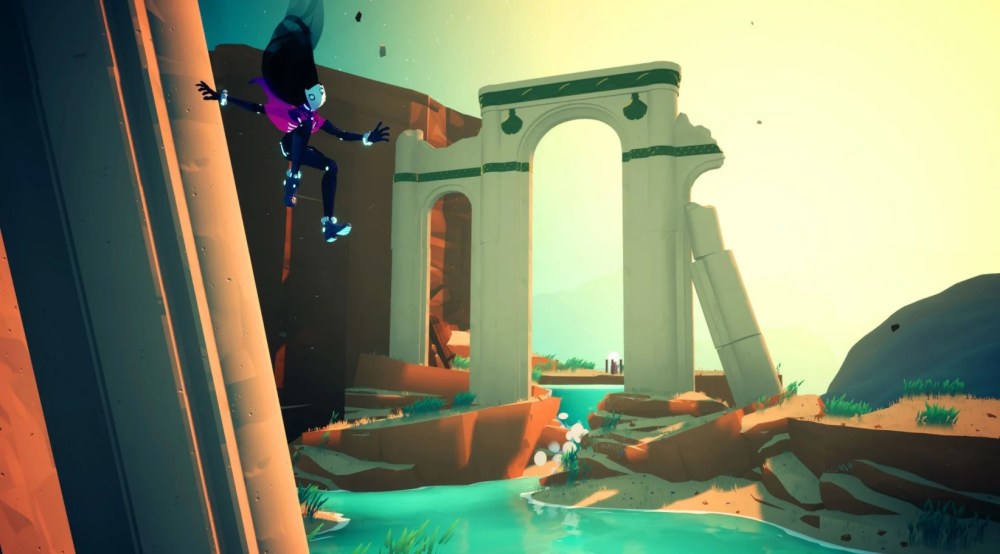
Omar: This shift from Hyper Light Drifter where it’s almost purely visual storytelling moving over to Solar Ash where there’s still visuals and now more voice acting along with text appearing on-screen, how do those changes present challenges or does it make the storytelling maybe a bit easier?
Alx: I wouldn’t say storytelling is ever gonna be easier. Voice acting and written word certainly offer specific advantages but they also come with their own burdens. Whereas Drifter was text-free in its storytelling and relied on a lot of visuals. That was really challenging, for sure. It took a lot of work to drive things when you didn’t have specific descriptors for it other than visuals. What we saved on that versus what we spent on it is a different equation, but it still costs a lot to tell a good story regardless of what you do.
I think voice acting has been really cool to have on the project. It’s been really great to go through that process and understand what it actually takes. It’s complicated. It’s a lot of work. And everyone participating puts in a ton of effort. Similarly with writing. It’s like who knew it takes a lot of work to write good stories. It’s an immense amount of labor to tell a good story regardless of what format you do it in.
It all takes some different considerations, but at the end of the day, you have to present something compelling.
Omar: Around the time when COVID started and everyone started getting locked down, how far into development was the team on Solar Ash, and what challenges has that presented?
Alx: It’s been a strange couple of years here and the pandemic affected everybody in some way or another. And certainly working from home is not ideal for me and I think for a bunch of folks on the team. We have a cool studio and we like hanging out with each other and we like seeing each other in person.
We’re not all set up for home office work. That transition was ultimately not the most challenging thing. If you had internet you could bring a rig to your house and slowly set up your space. Some people moved to get better spaces for the longer-term ultimately once we knew we were gonna be in it for the long haul. Our industry is very fortunate that we can do that with relative ease.
It’s not ultimately that easy, but comparatively, it’s better than losing a job or projects getting canceled. We can still transition that work model and get a lot of the same work done. It’s harder. Communication takes more effort in this format in a lot of ways.
Scheduling every meeting instead of just having the natural back and forth that happens in person can be really kind of exhausting. What’s ended up happening is really true in a lot of different places where it’s just a team and you’re isolated and everything is compounded in an already challenging situation for the world and we probably lost some time in there due to the difficulty of communicating every day in these ways. Not because we had to get our rigs up and running. That was the easy part. It was to sustain communication it’s losing that natural back and forth and having those spur-of-the-moment things happen in person.
It’s an oversight that you have to get used to. We definitely lost time there and it contributed to us pushing the project out further.
Omar: Speedrunning is one part of Hyper Light Drifter that really helps keep the game alive today with its strong community. And in an interview with PLAY Magazine, you were quoted as saying, “you want speedrunners to break the fuck out of Solar Ash.” At this point, how conducive would you say the game is to speedrunning and is there anyone on the team that keeps the pulse of that community to get a sense of features or control options that they might like?
Alx: We’re definitely looking to engage with anybody in the speedrunning community that becomes a staple around this game if it happens. We don’t want to impose any kind of a scene. Part of enjoying speedrunning is that it happens naturally. Things occur where people find fun and enjoyment with the different games that they take on. We’ll let things play out and see what pops up and definitely keep our eyes and ears peeled.
We’ll continue to look and listen and if there are features we can put in that helps push things into a more comfortable zone for speedrunners and we’ve got the opportunity for it then we’ll put stuff in or not patch things over that we otherwise might have.
There’s kind of a level of involvement that we really just have to judge on how it’s perceived and if it’s really a game people want to speedrun. We can’t force it. It’s like trying to force an eSport. It hasn’t really worked for anybody.
Omar: When you were starting the creation of Solar Ash, did you know for sure you wanted it to be a 3D game and how has that choice impacted the speed of the gameplay if it has at all?
Alx: I knew Solar Ash was going to be a 3D game since I was first conceiving of it. We had been working on Drifter for quite a while and I wanted to move away from pixel art. I wanted to move into 3D. I wanted to open up our path to do something that’s more fully realized that you can kind of lose yourself in better.
With Drifter we pushed ourselves a lot to hit a certain tone and vibe and make things feel as cohesive as possible so we could build this believable world. And we wanted to push that a whole lot further in 3D and it offers us those opportunities to make things even more believable or encapsulate the virtue of ‘hey it feels like how I move through an environment. That was the primary motivator. I just want to live in these worlds more. I want to be able to build stuff out and have people feel an even stronger connection to it, and the way forward is 3D.
It slowed down the speed of development for sure because it takes a lot longer to make stuff in 3D. An order of magnitude or two on certain aspects. Creating a crate in 3D is very different from creating a crate in pixel art. That’s just one of so many different aspects of what goes into a game.
As far as gameplay, this game is pretty fast. It’s a faster game than Drifter in pretty much every way. Our character is meant to move quickly and fluidly through the environment, so that was a focus early on and continued to be a through-line that guided us on a lot of decisions for gameplay and character control.
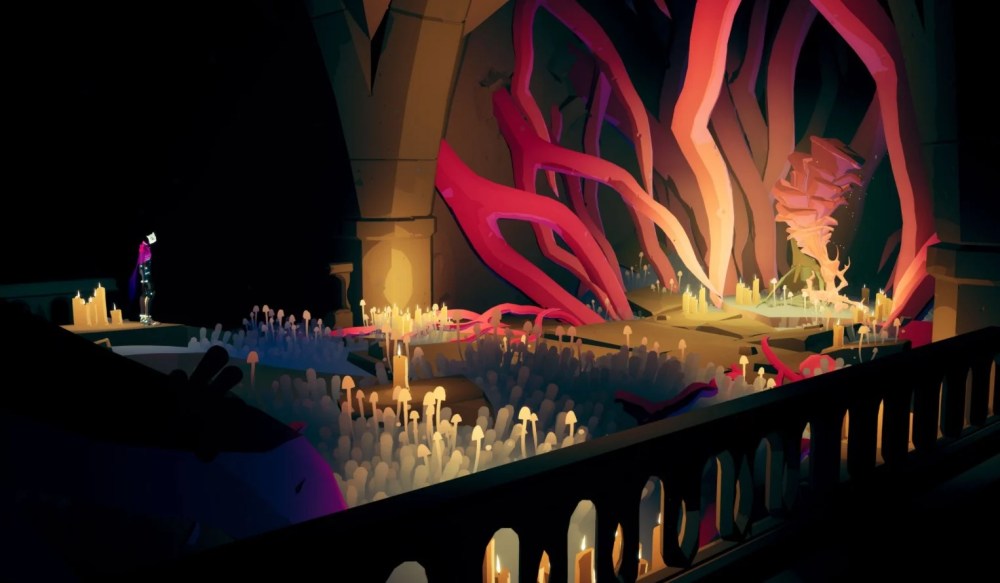
Omar: I’ve seen many pieces of media, movies, games, around the internet listed as inspirations for Hyper Light Drifter. What would you say inspired you when creating Solar Ash?
Alx: I’ve talked about Shadow of the Colossus or Mario Galaxy or Jet Set Radio and all those certainly contribute in some significant ways. It really comes down to Drifter being very grounded in 2D and with 3D we have the opportunity to open up another dimension and do more wild things in the environment so it was indulging all those wild ideas.
And fortunately, I was able to find the right people at the right time to build the ridiculous vision and work through five years of development. I’ve been very fortunate to have an incredible team to see this through at the end of the day. Otherwise, it’s just a ridiculous set of ideas.
Sure, inspirations come from a lot of different places. It’s that initial thought that I just want to push the boundaries. Drifter was one thing and I wasn’t to be as different as possible in many ways while still adhering to games that I am really drawn to and that the team is drawn to being third-person being heavy on character control. I’m not trying to make an RTS or anything like that.
Within the scope of an action-adventure third-person game, what can we do that’s gonna push the envelope even if it’s just for ourselves? It’s like cool we can do weird anti-gravity stuff, we can do climbing on giant moving creatures, we can do cloud surfing, we can do all this wild stuff, super-fast platforming. Like cool, let’s pick all the most difficult things we can do.
Again I was fortunate to find people that believed in this and wanted to lend their talents to finish this out, but otherwise, it’s kind of absurd.
Omar: That sounds good. Absurdity is a good thing.
Alx: Yeah I mean if you’re not doing ridiculous things what are you doing in life?
Omar: Living a boring life, probably. So as it stands right now Solar Ash will be coming to PS4, PS5, and PC. And I noticed when the game was revealed for PS5 that on your PlayStation Blog post you talked about the console’s SSD speed increasing load times and the feedback of the DualSense being two features of the console that you hadn’t even dreamed of while working on Solar Ash. Would you be able to elaborate now on what those features could bring to the PS5 version of the game?
Alx: I think the stuff I put in there was pretty straightforward. I’m not sure there’s much to elaborate on. I mean that SSD sure is fast and it’s kind of simple as that. It’s nice to play on a PS5 as opposed to anything with a slower drive in it. It can do a lot of amazing things with that speed like offloading assets.
For us though, we’re not a huge company like Insomniac that has a bunch of engineers to really do some wild stuff with it. We use the most straightforward stuff with it like shorter loading times, like practically instant in a lot of cases.
And then I was the kid that bought one of those N64 expansion vibration packs early on. I saved up the money to get one and wouldn’t let it go and I was really disappointed when games wouldn’t support it because I thought vibration was the best thing. And I still believe vibration is the best thing. I miss it when vibration is turned off. I think it’s wild that people want to turn it off in the first place on any game ever. And so of course I love that there’s a lot more depth in modern controllers.
And on the PS5 specifically, it’s like oh yeah put new interesting ideas in the triggers. It’s really cool. And I go out of my way to get games on the PS5 specifically so I can see what developers do with those triggers and the rumble and all that stuff because I love that stuff. It’s super cool and way more immersive. I will play an FPS on a controller on my PS5 now over pretty much any other platform almost exclusively because of the controller.
Omar: I wish, but I just can’t aim with a controller. It’s always keyboard and mouse.
Alx: I used to be the same way but I stuck it out and got used to it and got good at it. It just took some practice. Practice and I had to reorient my head. I was really lost when my roommate and I started playing Halo together way back in the day. I was like, “ugh I hate controllers for shooters. I’ll never use this.” And now that’s the first place I go is a controller for shooters.
Omar: Back in the gameplay trailer released in February for Solar Ash you mentioned the main character, Rei, is a Voidrunner. How would you describe what a Voidrunner is and are you able to talk about the possibility of encountering other Voidrunners either from her world or other worlds that have been devoured?
Alx: Yeah, I can speak to it a little bit. Part of playing the game is exploring and understanding some of these ideas in context, but I’ll give the briefest version I can give. I won’t dig too deep or spoil anything.
Voidrunners are kind of this group of explorers that jump into black holes and basically spelunk down there and come back out alive with whatever they have found. Just imagining that black holes have something in them still that was preserved. That there are a group of highly-skilled and well-equipped entities that can jump in and sustain and do the wild stuff that it takes to enter such an anomaly.

Omar: We already know PS4, PS5, and PC will get Solar Ash. I’m not going to ask you to confirm anything, but are you at least considering other platforms? Is that something that once the game is out you would like to look into with the team?
Alx: Everyone knows that everybody is considering other platforms, it’s just a matter of what’s viable, what our timeline is, what’s gonna work for the groups we partnered with, Sony, and otherwise.
So there are plenty of considerations but at the end of the day, I’d love for Solar to be out on as many platforms as possible and have the widest reach it can. It just depends on what needs to happen and when and where and how. But for now, yeah we’ll be out on PS4 and PS5, two of the biggest platforms on the planet, and EGS. That’s a pretty good set of platforms.
Omar: Yeah, only a few hundred million probably.
Alx: Yeah, nothing to sneeze at. And they’ve been great partners overall, Sony and Epic. They’re good to work with. I can’t have more positive words for those groups.
Omar: Let’s go back to Hyper Light Drifter. What would fans of the game have to look forward to in Solar Ash? Are there any kinds of features that are similar from one game to the other? And what are you most excited for fans to get their hands onto that’s completely new in Solar Ash?
Alx: Well, Solar Ash is its own game in many many ways. Certainly, we carry over ideas and aesthetics and vibes, et cetera. It’s still a post-apocalyptic action game, so you’ll find similarities. It’s not secretly some secret sequel to Drifter. It’s very much its own entity.
The hope is that you see a Heart Machine game and you go ‘oh I know who that is, I know that group’ and there’s no mystery like is this from Capcom? We have an identifiable brand in more ways than one that we can lean on here for even future games.
There’s a lot that goes into working on a project of this scale and we want people to see everything. But it’s not gonna be everything to everybody. It’s gonna be certain things to certain people. And you hope at the end of the day, all you really ask for and hope for is that it’ll make some sort of impact on a person, that they have an opinion on it, that they care enough to have that response.
Whether they hate it or love it, there’s plenty on that spectrum between the extremes. It’s a different game and it’ll get a different response, I’m sure there’ll be people out there that love Drifter and don’t like this game. I’m sure there’ll be people who love Drifter and do like this game. I think it’ll resonate with folks. I hope it does.
I know that’s broad, but I think it’s hard to pinpoint one thing that people definitely should know. We built a whole ass game with a lot of really cool stuff in it and there’s so much there to dig into and feel a certain way about. Maybe somebody will only like this game because of the soundtrack. Maybe somebody will only like the cloud surfing or the bosses. Who knows? But if it makes a lasting impact on them, if they remember it and they talk about it and they engage with it, that’s kind of the best possible outcome.
Omar: Yeah, and people will definitely let you know their opinions on the internet.
Alx: It’s true, they do. We all do, don’t we? We all talk about things pretty openly these days including our strong likes or dislikes for certain media that we enjoy. I’m just as engaged as anybody on that.
Sometimes I try to curtail that and not yell too loudly, especially when it comes to games. Once you understand what goes into making certain things you get quite a bit of a different experience and perspective and your judgment for the end product. The judgment for that media I would at least hope changes as a creator. For games, as a person who’s played games their whole life, I certainly changed my perspective on it because I know how incredibly difficult it is to complete any game, let alone make a decent game, let alone make a good or great game.
Every step of that process is against you in so many ways even with all the tools that we have. It’s the creative process on hardcore mode, so I try not to be a harsh judger of any game these days because it’s a fucking miracle that a damn single one that’s completely coming out in the first place.
You’ll be able to pick up Solar Ash very soon when it launches for PS4, PS5, and PC via the Epic Games Store on Dec. 2.
The post Solar Ash Interview: Lead Developer Discusses Accessibility, Transitioning to 3D, Speedrunning, & More appeared first on Twinfinite.

